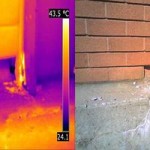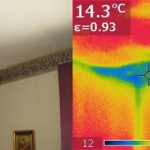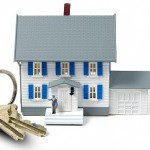What First Time Buyers need to know about Home Inspections
 Home inspection should be a top priority for anyone interested in purchasing a new home. This includes first time buyers. After years of scrimping for a deposit and hard slog at work to climb the career ladder you may be thrilled to finally be able to afford your first house or apartment. You may even be burning with excitement at having finally found your dream house after months of visiting underwhelming or overpriced properties. The last thing you want is anything to spoil it. Getting a home inspector in to examine a property that you are thinking of buying is crucial, however. Even an immaculate and new apartment or a house that looks like a showroom can be hiding costly flaws. They might make you live to regret ever buying the property years down the line.
Home inspection should be a top priority for anyone interested in purchasing a new home. This includes first time buyers. After years of scrimping for a deposit and hard slog at work to climb the career ladder you may be thrilled to finally be able to afford your first house or apartment. You may even be burning with excitement at having finally found your dream house after months of visiting underwhelming or overpriced properties. The last thing you want is anything to spoil it. Getting a home inspector in to examine a property that you are thinking of buying is crucial, however. Even an immaculate and new apartment or a house that looks like a showroom can be hiding costly flaws. They might make you live to regret ever buying the property years down the line.
As a first time buyer you probably won’t have any particularly detailed knowledge of what makes a property sound and how to check a home is in good order, and there is no reason why you should. For example, can you identify what signs give away five or more of the most common roof problems? Or do you know how to tell if a property is at risk of developing a mold problem? Or how about making sure that the wiring is as it should be? Thought not! That is okay because fortunately, a good home inspector will be able to do all of this for you and more.
A home inspection checklist for first time buyers
For your own peace of mind you might consider making sure that you are present during the home inspection of your potential first home. It is useful to have your own checklist of basic tasks which a home inspector should carry out in order to ensure that you get a thorough job. The home inspection should include the following:
* Checks on the structure and foundation of the property: Irrespective of whether a house is built on a concrete slab or full basement, it needs to be resting on a foundation that is able to both take and distribute its weight. It also needs to be capable of withstanding the lateral forces of soil, which can sometimes cause problems with leaks and cracks. It cannot be stressed enough that checking the foundations of a house is absolutely crucial. It is true that first time homeowners can get wrapped up in all of the other things involved in securing a property like bargaining the best price and finding a mortgage. The latter is an especially huge issue for Americans in the wake of the subprime mortgage crisis as less mortgages are now available for people buying their first home. This is not just the case in the USA.
In the UK too, for example, qualifying and finding a first time mortgage is the number one concern of people buying property for the first time as banks have been accused of lending less since the financial crisis. As money.co.uk says, “If you’re looking to buy your first home then finding the best first time buyer mortgages is likely to be one of your main priorities”. There is no point on buying a castle built on sand, however, and the fact is that a thorough home inspection to check that a house has solid fundamentals is often a prerequisite for a decent mortgage. After all, it is in the lender’s interest that the property should be structurally sound. Therefore researching your mortgage and getting a home inspection ultimately go hand in hand.
* Inspection of the plumbing system: Plumbing inspection involves a number of different checks. These checks include examining pipes and faucets for leaks and checking the water pressure in the bathroom furthest away from the property’s water source. Other elements of a plumbing inspection might include checking that the water piping in a property has wrapped pipes to ensure that hot water is preserved over the winter and that the water tank it big enough to meet your needs as the prospective new owner.
* Inspection of the heating system and verification of the type of heating system: An examination of the heating system should include a detailed inspection of the venting system and checking the system for possible leaks. An examination of the blower to ensure that there is no lubrication or possible obstructions should also be undertaken, as should an inspection of the furnace’s inside chamber. In particular some furnaces suffer from holes or rust in this area of the furnace. The inspector should also clean the pilots, burners and sensors. They should verify that there is no risk of the furnace overheating by checking its maximum temperature. Finally the crucial carbon monoxide test is imperative. Other checks that should be included in a heating system inspection include ensuring that the air filters in the furnace are clean, checking the vent registers and that the thermostat is functioning correctly.
* Checking that the property’s wiring and overall electrical system is sound and safe: A house inspector should inspect a minimum of six electrical appliances in a house to ensure that the electricity system is functioning as it should. Furthermore, an inspection should also entail a polarity and earth fault loop test on sockets around the property at random; verification of whether adequate protective bonding conductors are in place; and an inspection of the consumer unit.
* Checking to ensure that there are no bug or insect infestations or a potential environment in which an infestation could develop: Wood-destroying insects can be particularly lethal for homes. For example, powder post beetles can lay their eggs in the cracks in unprotected wood and their offspring can start tunnelling once they have hatched. Therefore, a check for insects in the property is imperative.
* Inspection for asbestos: This should entail taking measures to identify the possible location of asbestos in a property and also the concentration of asbestos. It could also involve making a record of all of the materials in a property which contain asbestos and carrying out a risk assessment on those materials.
* Inspection of the well and septic system: If the property has its own well and septic system, then they should be examined. For example, a well’s record should be obtained from the relevant authorities and its location noted. The well casing should be in good condition without cracks and it should drain correctly. The water quality should also be tested by sampling the water for e coliform, E. Coli and nitrate.
Other things that should be checked
There are other aspects of a house inspection that should be on the checklist and the devil is in the detail. For example, the inspector should look around the attic or basement if the property has one and check the windows and doors to ensure that they open and close properly. All closets, walls, ceilings and floors should be examined. Nor should the outside of a property be neglected. A property’s facade and other aspects of the exterior should also be thoroughly examined for any indication of rot or weather damage. The inspector should also make a thorough examination of the roof, either by getting onto the roof or inspecting it with binoculars.





Recent Comments